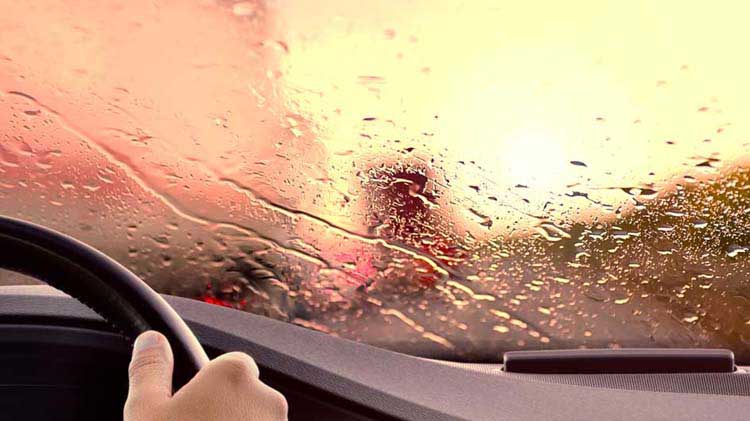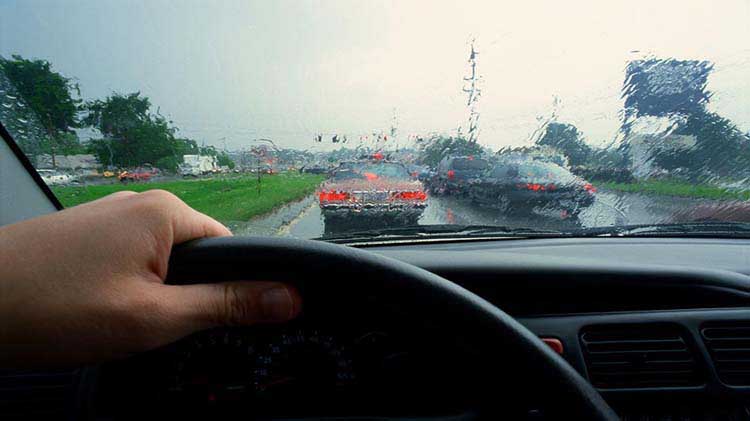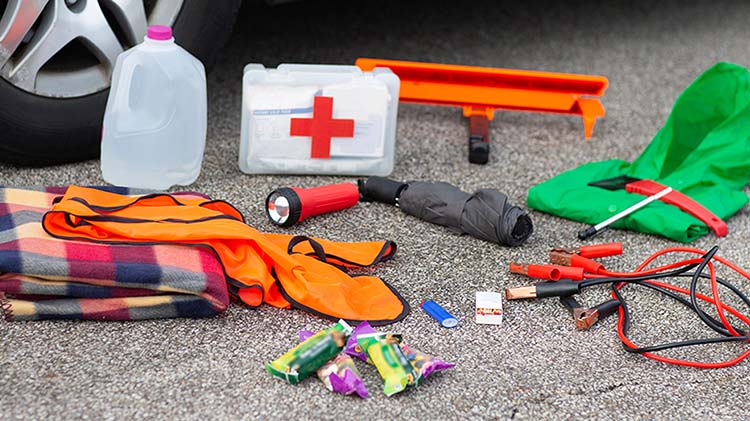Can you drive safely in severe weather?
It's helpful to know how to drive safely in ice, snow, rain, fog and other inclement weather.
Driving in regular weather can be hard, but when severe weather conditions hit, it's important to take extra precautions. You probably already know that slowing down and increasing concentration can make a big difference. But these safety tips for specific kinds of weather can help you get to your destination safely.
Tips for driving in snow or ice
- Slow down. Bridges and overpasses freeze first, so take it slow and avoid sudden changes in speed or direction. Watch out for black ice.
- Keep windows clear. Visibility is crucial, especially when driving in bad weather. Turn on the lights and wipers and crank up the defroster, if necessary. Scrape the ice off of your windows before you leave to ensure proper visibility. Also, remove all items from the back window area. If you're still having trouble seeing, carefully pull over to a safe location well off the roadway.
- Brake cautiously. Abrupt braking can cause lock-up and loss of steering control. If you have anti-lock brakes, apply constant, firm pressure to the pedal.
- Resist the urge to "floor it". If you get stuck in snow, straighten the wheels and accelerate slowly. Avoid spinning the tires. Use sand or blocks under the drive wheels.
Tips for driving in rain
- Turn on wipers. Yes, it's obvious, but remember to keep them maintained. Wipers should be replaced every six to twelve months for optimal performance. You may also want to consider curved beam wiper blades, which will provide more uniform contact with the glass in the rain.
- Use headlights. Visibility is usually compromised in rainy conditions. Headlights can help. All states have laws requiring the use of headlights in low visibility, and many states require headlights when wipers are in use.
- Keep windows clear. The defroster or air conditioner may help keep windows and mirrors clear.
- Be patient. Take it slower than normal and leave more room when stopping. Wet pavement may cause loss of traction and lead to sliding or hydroplaning.
- Do not cross flooded roadways. Because it's tough to tell how deep water may be, it's best to find an alternate route when there are heavy rains. The last thing you want is to get caught in a flash flood or possibly incur water damage in your car.
- Turn off cruise control. When roads are wet, it is best to allow the driver to control speed and react to conditions.
Driving in fog tips
- Turn on the low beams and fog lights. Headlights should be on and set to low beam in the fog.
- Wait it out. If you're having trouble seeing, safely pull over to the right side — well out of the traffic lane — and turn on your emergency flashers. Wait until visibility improves before continuing.
Tips for driving in high winds
- Look out. Keep an eye out for flying debris. And use extra caution near trailers, vans or vehicles carrying lightweight cargo.
- Some cars shouldn't be driven. It's best not to drive a trailer, van or other "high-profile" vehicle (autos with high centers of gravity like SUVs and trucks) in high winds.
Tips for driving in a dust storm
- Assess the situation. If you begin seeing dust and dirt in the air while driving, evaluate the conditions and determine if it's safe to continue driving or if it is better to pull off the road.
- Pull off the road if necessary. Pull your car off the road as soon as it is safe to do so. Choose a location far from the pavement to avoid being too close to other cars.
- Once you've pulled off the road, remain inside your vehicle. This can help protect you from exposure to the dust and may keep you safer in case other vehicles are in close proximity.
- Drive cautiously if continued driving is necessary. If you must continue driving due to specific circumstances, proceed with extreme caution. Here are some tips to remember:
- Drive at a speed that is appropriate for the current visibility conditions. Slow down to a speed that allows you to maintain control of your vehicle and react to unexpected situations.
- Leave your lights turned on and consider turning on your hazard lights to help enhance your vehicle's visibility. This might help other drivers see your car and avoid colliding with it.
- Occasionally honk your horn to alert other drivers to your presence. This may help prevent accidents by making others aware of your vehicle's proximity.
- Use the center lines of the road as a guide to stay on the correct path. This can help you navigate through low-visibility conditions.
- Try to avoid coming to a stop in the middle of the road, as other drivers may not see you in time to avoid a collision. Keep moving cautiously until you find a safe place to pull off the road if needed.
Inclement weather driving tips
- Turn on headlights and wipers.
- Listen to the radio. Tune into a local weather station for storm and traffic updates.
- Do not try to outrun a tornado. Get out of the car and find shelter. If you can't reach a safe structure, lie down in a ditch or low area. Stay face down to protect yourself from flying debris and cover the back of your head and neck with your hands. Stay alert for flash floods.
Driving in all types of weather
- Buckle up. Every trip, every time.
- Focus on your destination and avoid distractions.
- Emergency kit. Pack and store an emergency kit in your trunk or cargo area with items you could use in the event of a roadside situation.
- Recalls. Check to verify there are no safety recalls on your vehicle.
- Give them room. If you see vehicles or emergency personnel on the side of the interstate, move to the opposite lane if it’s safe to do so.
Special tips for commercial drivers
- Watch out for rollovers. Due to their large surface area and high center of gravity, commercial vehicles can be highly susceptible to rolling over in high winds. Assess safety and weather conditions before you get on the road.
- Severe winds. Due to trucks feeling greater impact in high winds, they possess sufficient risk of winds veering them out of their lane of travel in severe weather.
- Lost or damaged cargo. If your cargo becomes lost or damaged in severe weather, stop and pull off the road. Contact police to warn and divert traffic to lanes without debris. Remove debris from the road if you can do it safely — or wait for police. Place flares near your vehicle to warn oncoming vehicles.
These tips may help ease some anxiety on the road during all kinds of weather. However, the unexpected can still happen. Learn more about how State Farm® can help after a crash.




